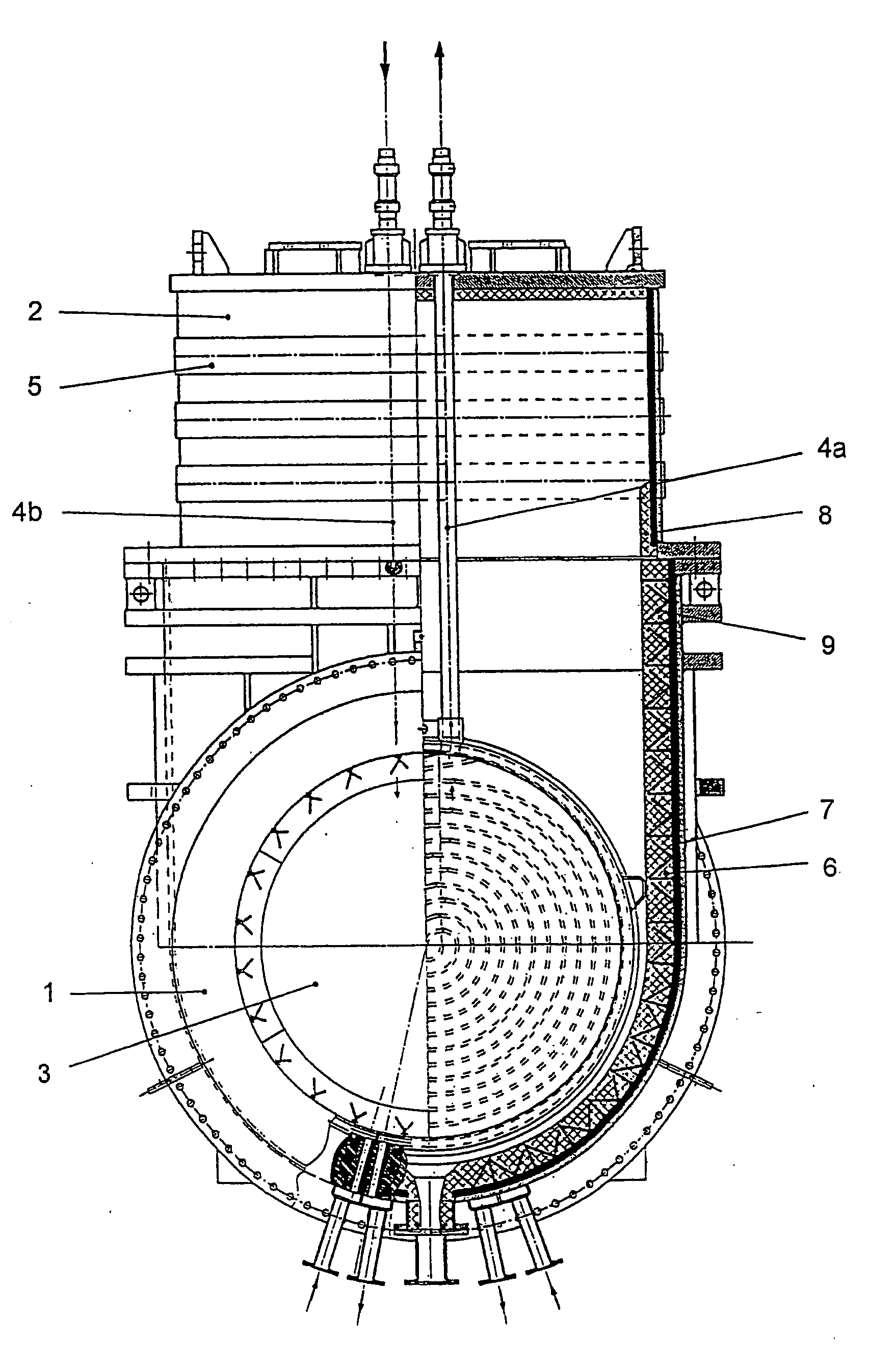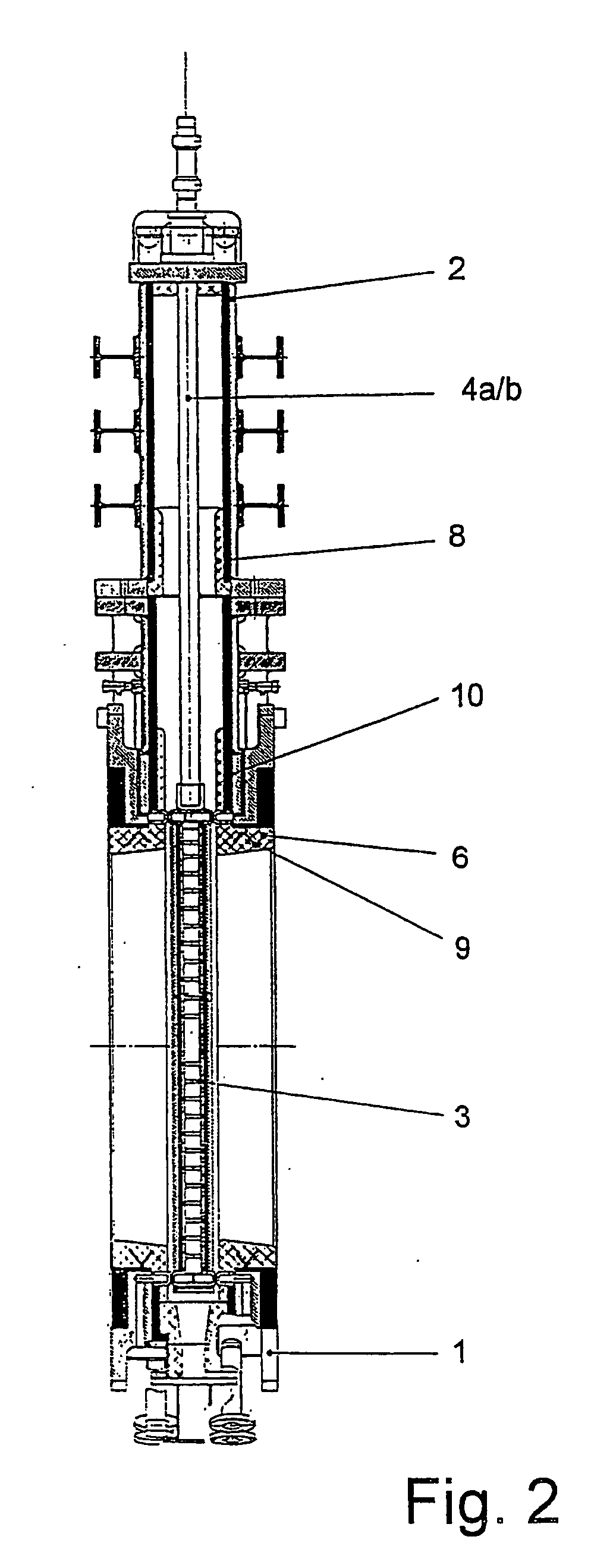Device for protecting metallic surfaces from high-temperature condensates of corrosive media in technical installations
a technology of corrosive media and protective devices, which is applied in the field of protective devices for metallic surfaces from high-temperature condensates of corrosive media in technical installations, can solve the problems of acid corrosion on the interior walls of steel sheet cladding, damage to steel sheet cladding, and the formation of polluted condensates of liquid water, so as to increase the thermal insulation effect, increase the temperature resistance of gas-vapor mixture barriers, and reduce the effect of energy consumption
- Summary
- Abstract
- Description
- Claims
- Application Information
AI Technical Summary
Benefits of technology
Problems solved by technology
Method used
Image
Examples
Embodiment Construction
[0083]FIG. 1 shows a sectional view, perpendicular to flow direction, of a barrier device that is a hot blast valve. The valve housing 1 is fitted with a flange-mounted hood 2 into which can be slid a valve plate 3 that is shaped like a barrier device. This valve plate 3 is hollow and is fitted with spiral-shaped cooling agent channels through which a cooling agent runs. The valve plate 3 hangs on two connecting rods 4a, 4b which are hollow and at the same time function as inflow 4b and outflow 4a for the cooling agent. The connecting rods 4a and 4b run through a flange-mounted hood 2 which is fitted onto the upper side of the housing 1 and which is shaped in such a way that it can receive the valve plate 3 when the barrier device is in the open position. On the upper side of the hood 2 there are openings for the connecting rods 4a and 4b. Gland seals on the openings separate the interior space of the hot blast valve from the surroundings. Not shown here is the adjustment mechanism ...
PUM
 Login to View More
Login to View More Abstract
Description
Claims
Application Information
 Login to View More
Login to View More - R&D
- Intellectual Property
- Life Sciences
- Materials
- Tech Scout
- Unparalleled Data Quality
- Higher Quality Content
- 60% Fewer Hallucinations
Browse by: Latest US Patents, China's latest patents, Technical Efficacy Thesaurus, Application Domain, Technology Topic, Popular Technical Reports.
© 2025 PatSnap. All rights reserved.Legal|Privacy policy|Modern Slavery Act Transparency Statement|Sitemap|About US| Contact US: help@patsnap.com



